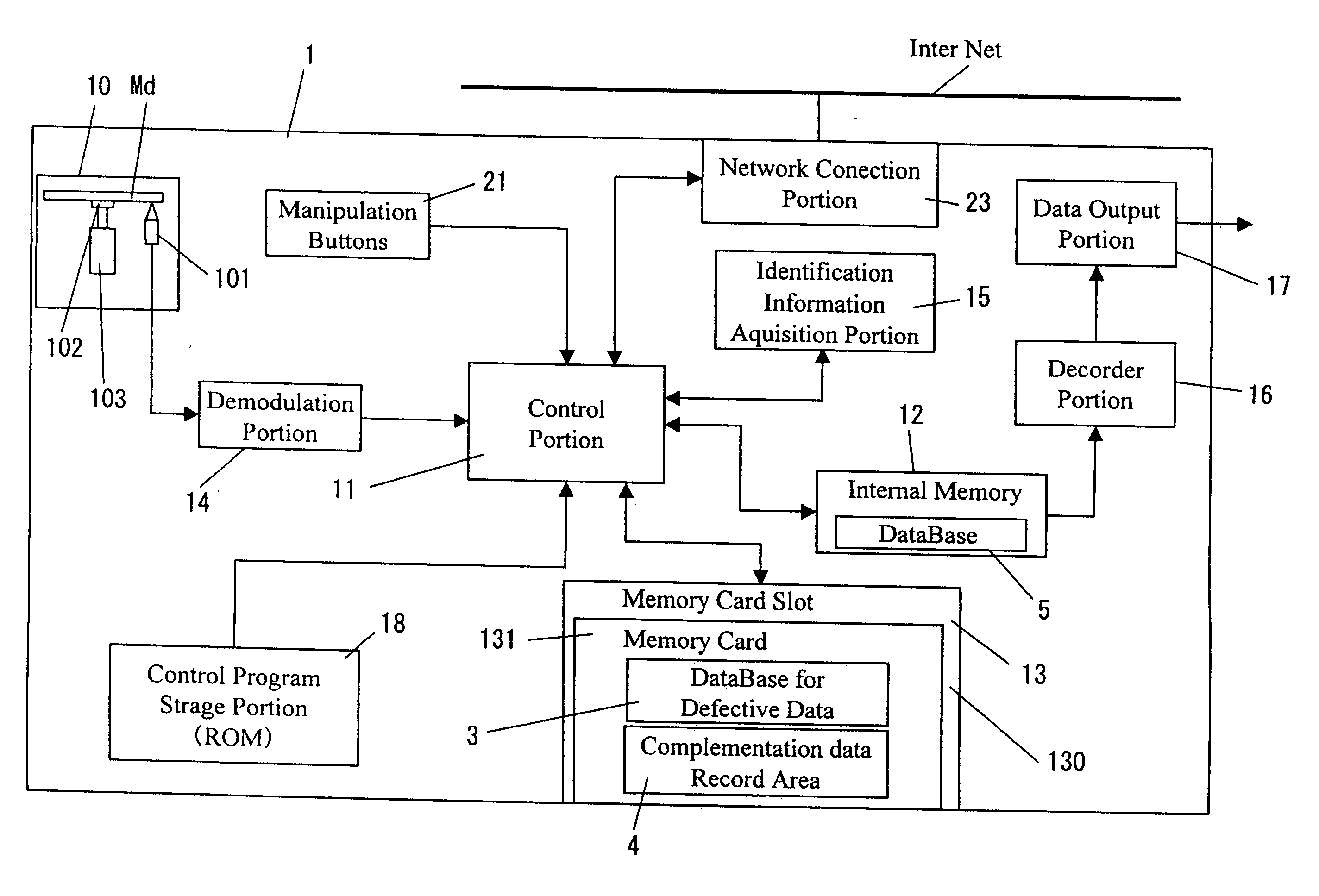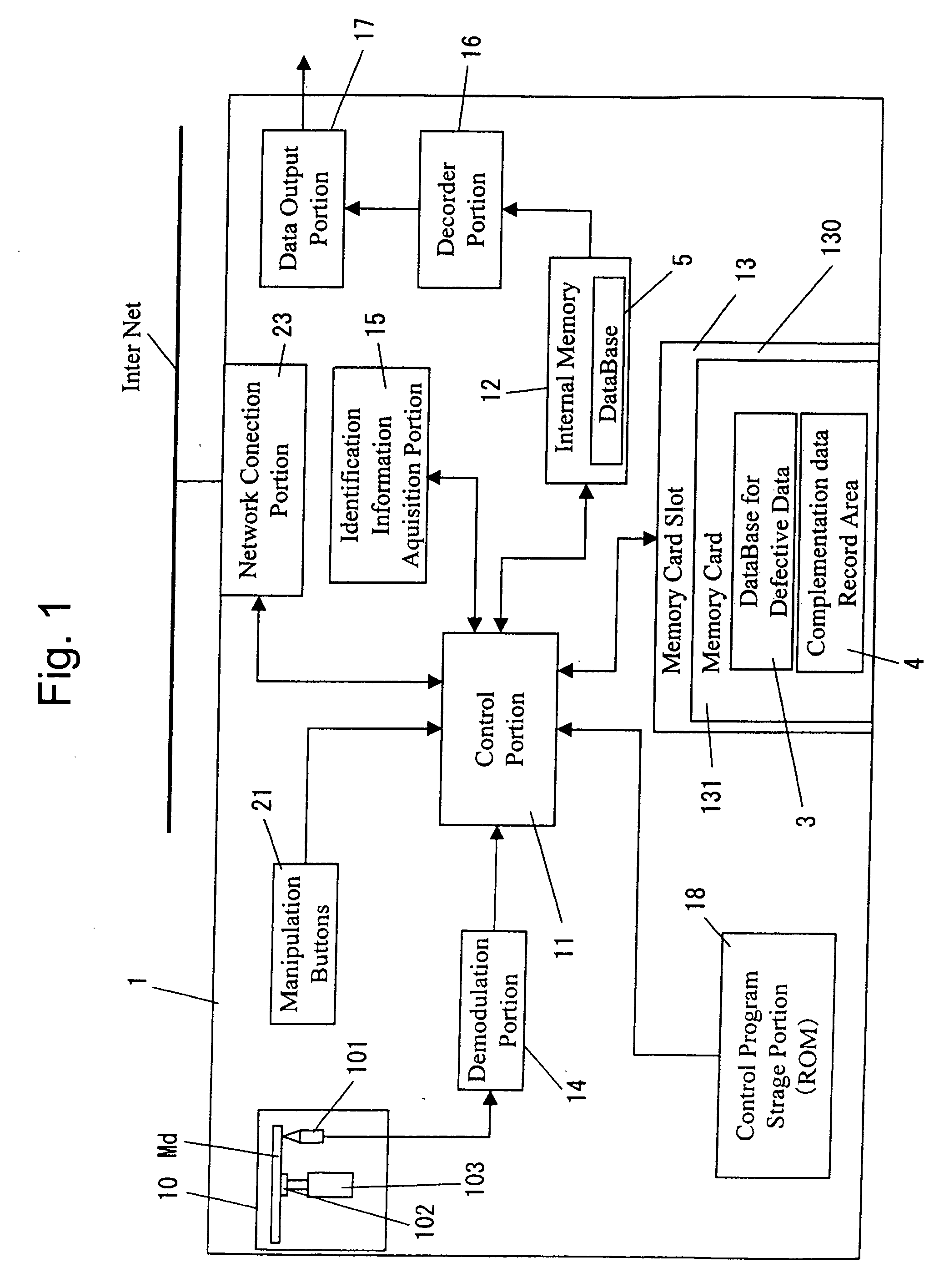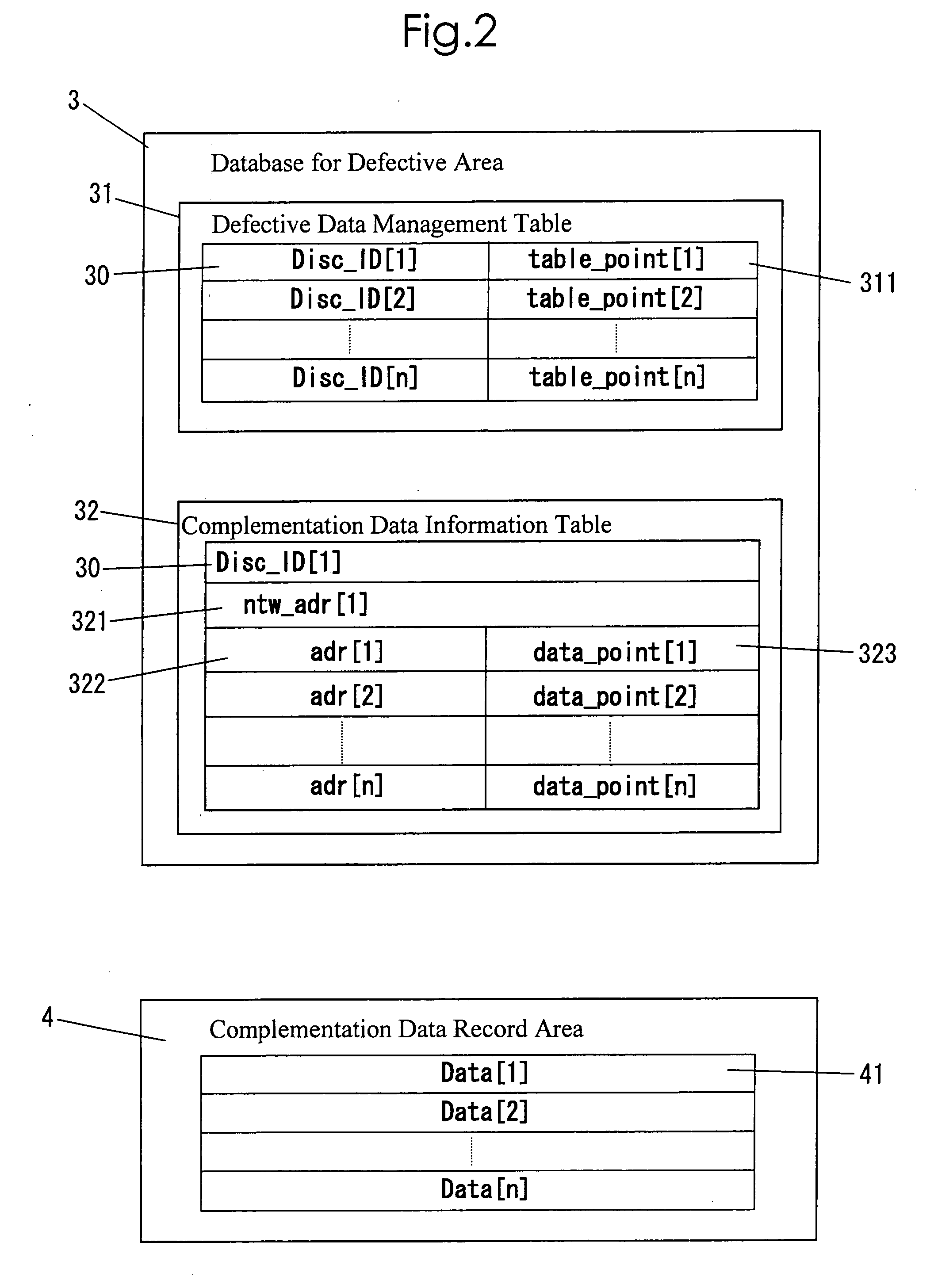Optical disc apparatus and data complementation method
- Summary
- Abstract
- Description
- Claims
- Application Information
AI Technical Summary
Benefits of technology
Problems solved by technology
Method used
Image
Examples
Embodiment Construction
[0043] Embodiments of the present invention will be described with reference to the drawings. FIG. 1 is a block diagram of a DVD player which is an example of an optical disc apparatus according to the invention.
[0044] As shown in the block diagram of FIG. 1, the DVD player 1 in the invention is configured so as to include, at least, a DVD unit 10, a control portion 11, an internal memory 12, an external memory 13, a demodulation portion 14, an identification information acquisition portion 15, a decoder portion 16, a data output portion 17, a control program storage portion 18, manipulation buttons 21, and a network connection portion 23.
[0045] The DVD unit 10 includes an optical pickup 101 which projects a laser beam onto a DVD medium Md and which detects reflected light, a turntable 102 which holds the DVD medium Md, and a drive motor 103 which turns the turntable 102. The optical pickup 101 and the drive motor 103 are controlled by the control portion 11. The light detected by...
PUM
 Login to View More
Login to View More Abstract
Description
Claims
Application Information
 Login to View More
Login to View More - R&D
- Intellectual Property
- Life Sciences
- Materials
- Tech Scout
- Unparalleled Data Quality
- Higher Quality Content
- 60% Fewer Hallucinations
Browse by: Latest US Patents, China's latest patents, Technical Efficacy Thesaurus, Application Domain, Technology Topic, Popular Technical Reports.
© 2025 PatSnap. All rights reserved.Legal|Privacy policy|Modern Slavery Act Transparency Statement|Sitemap|About US| Contact US: help@patsnap.com



